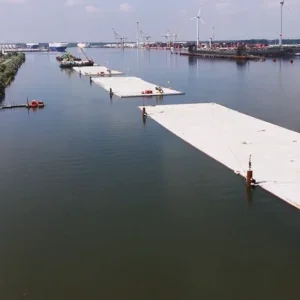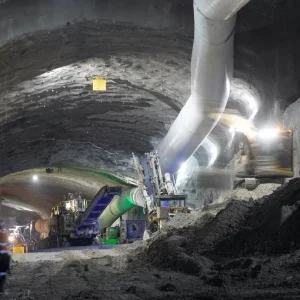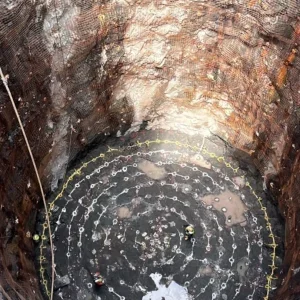On 6 September, the historic first breakthrough took place for the transalpine Gotthard base tunnel when a Herrenknecht TBM holed the east bore from the Bodio to Faido sections after four years mining.
At 57km long, the twin Gotthard running tunnels will be the world’s longest rail tunnels when they open in 2016. The route is sited on the main north-south transalpine traffic passage as part of a major upgrade to Swiss rail transport infrastructure and aims to remove much of the Germany-Italy freight traffic from Swiss roads.
The 9.33m diameter Herrenknecht hardrock gripper TBM (S-210), named Sissi for the project, broke through within 20mm vertically and 50mm horizontally to its planned alignment after boring 13,427m in 1,405 days of operation. Equipped with 3,500kW of cutterhead power, a cutterhead torque of 5,290kNm and 27,488kN of total thrust, the TBM achieved a daily best performance of 38m and a weekly best of 183.6m through mountain geology characterised as gneiss, granite and slate.
The contractors are the TAT consortium, a JV of Zschokke Locher, Hochtief, Alpine Mayreder Bau, CSC and Impregilo. TAT’s excavation was delayed by 17 months due to difficult geological formations, including a 500m long fault of weathered, cohesionless material that ran parallel to the alignment. Several instances of squeezing ground were encountered and in the latter parts of the drive, it took two weeks to free the cutterhead from such conditions. A spokesperson from Herrenknecht praised the project team’s “unique performances under the most difficult conditions”.
Marking the momentous occasion of the first breakthrough of the running tunnels of this ambitious scheme and alluding to the problems overcome to do so, Peter Zbinden, head of AlpTransit, the overall builder, said: “It is a mere pin prick for the mountain, but a breakthrough for mankind.” At the beginning of September, approximately 99km of the 153.5km long, US$6.4bn scheme has been excavated, including shafts and galleries, with up to 2,200 miners working on the seven construction sites that make up the project at present.
Herrenknecht currently has four hardrock gripper TBMs with diameters ranging from 8.83m to 9.58m excavating 75km of the base tunnels underneath the Alps. A breakthrough in the west tube of the Bodio to Faido section is planned for October. The TBMs will be walked across the Faido station excavation and used to bore the 14.6km long tunnels from Faido towards the Sedrun section. For this part of the alignment, the cutterhead will be extended to 9.33m diameter. These tunnels are planned to breakthrough in 2010.







